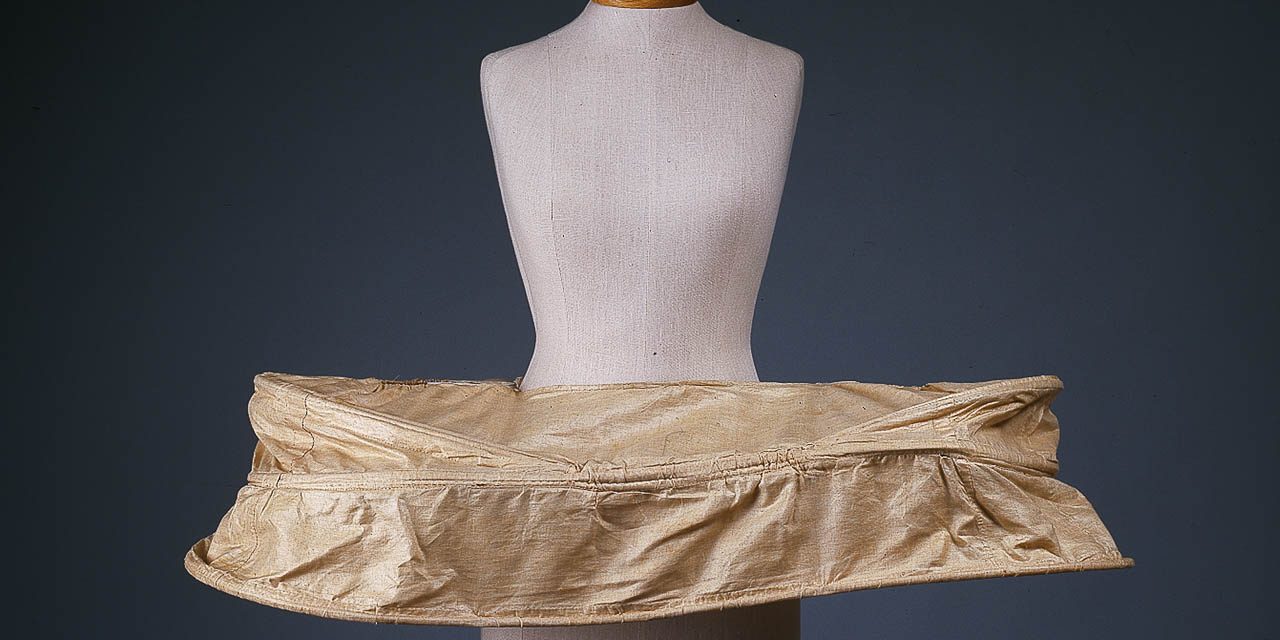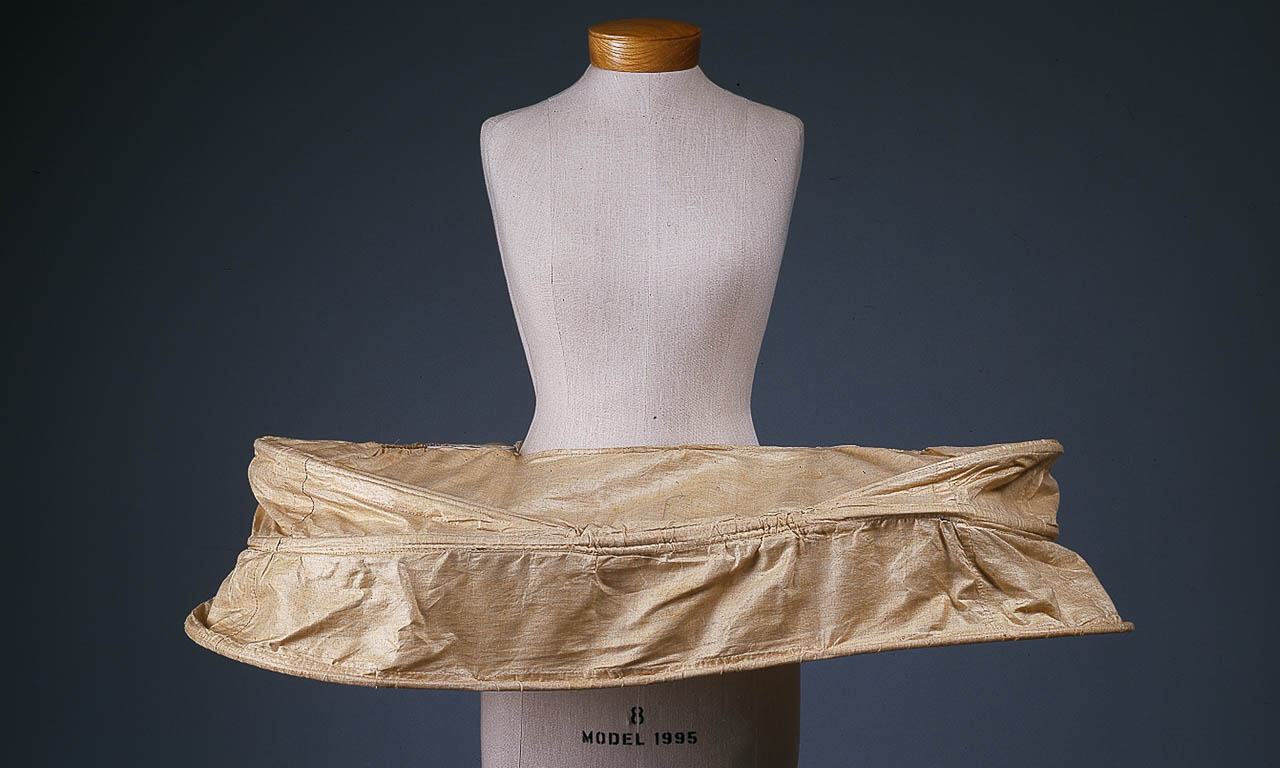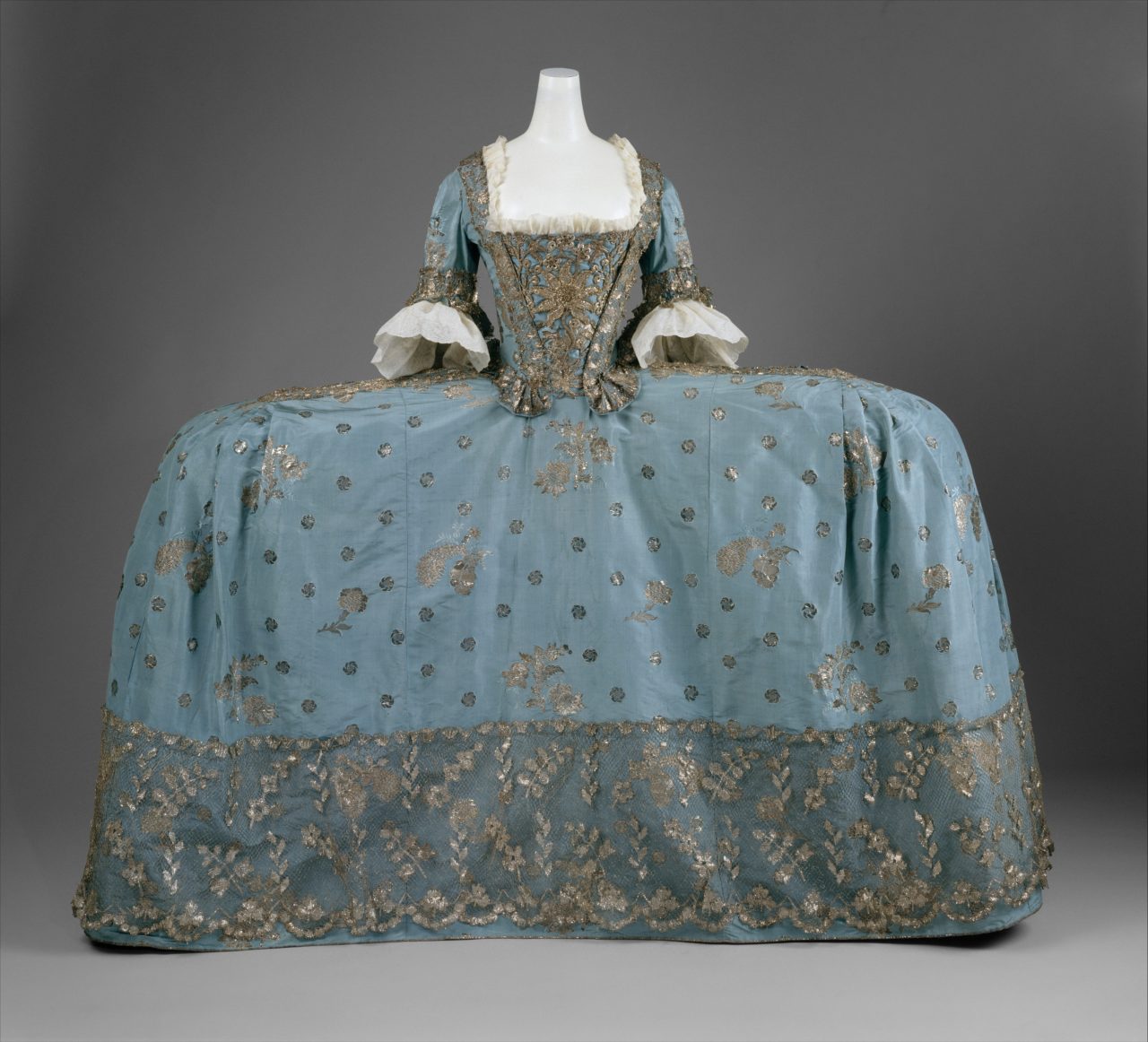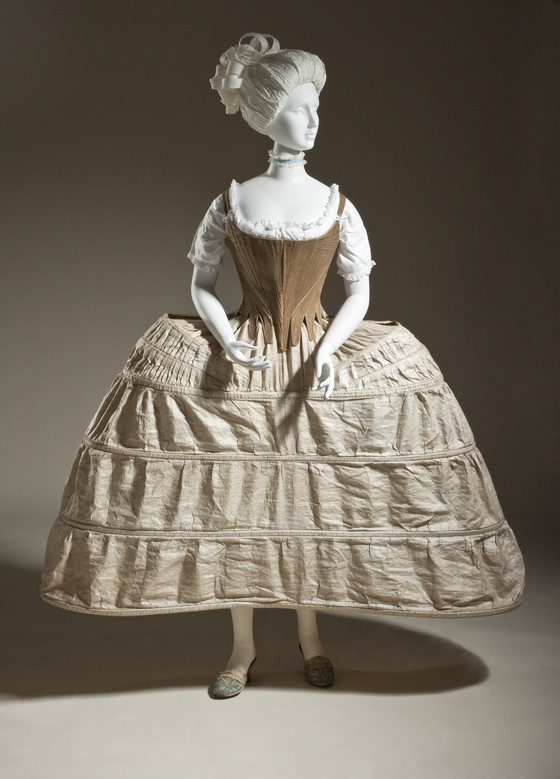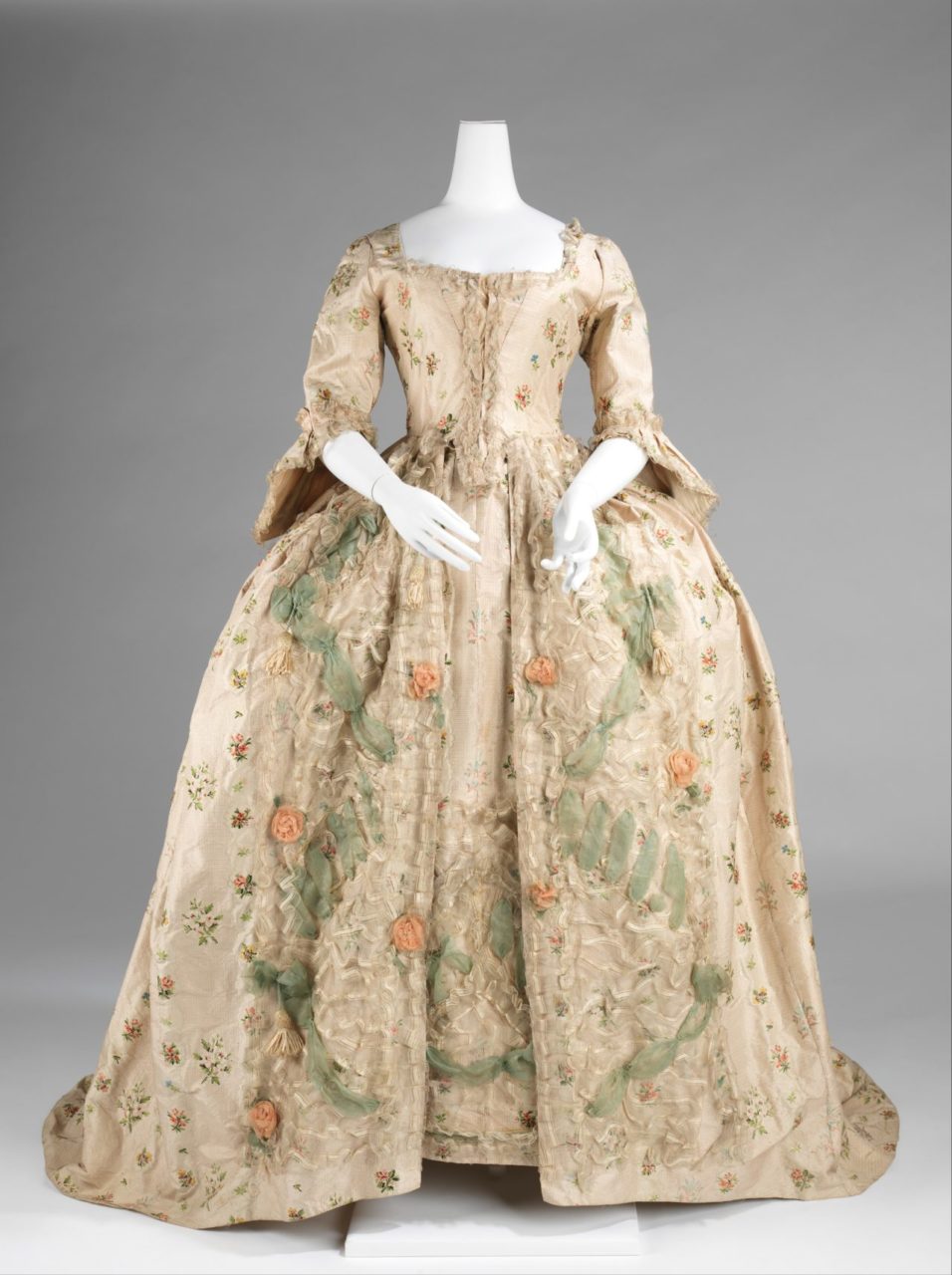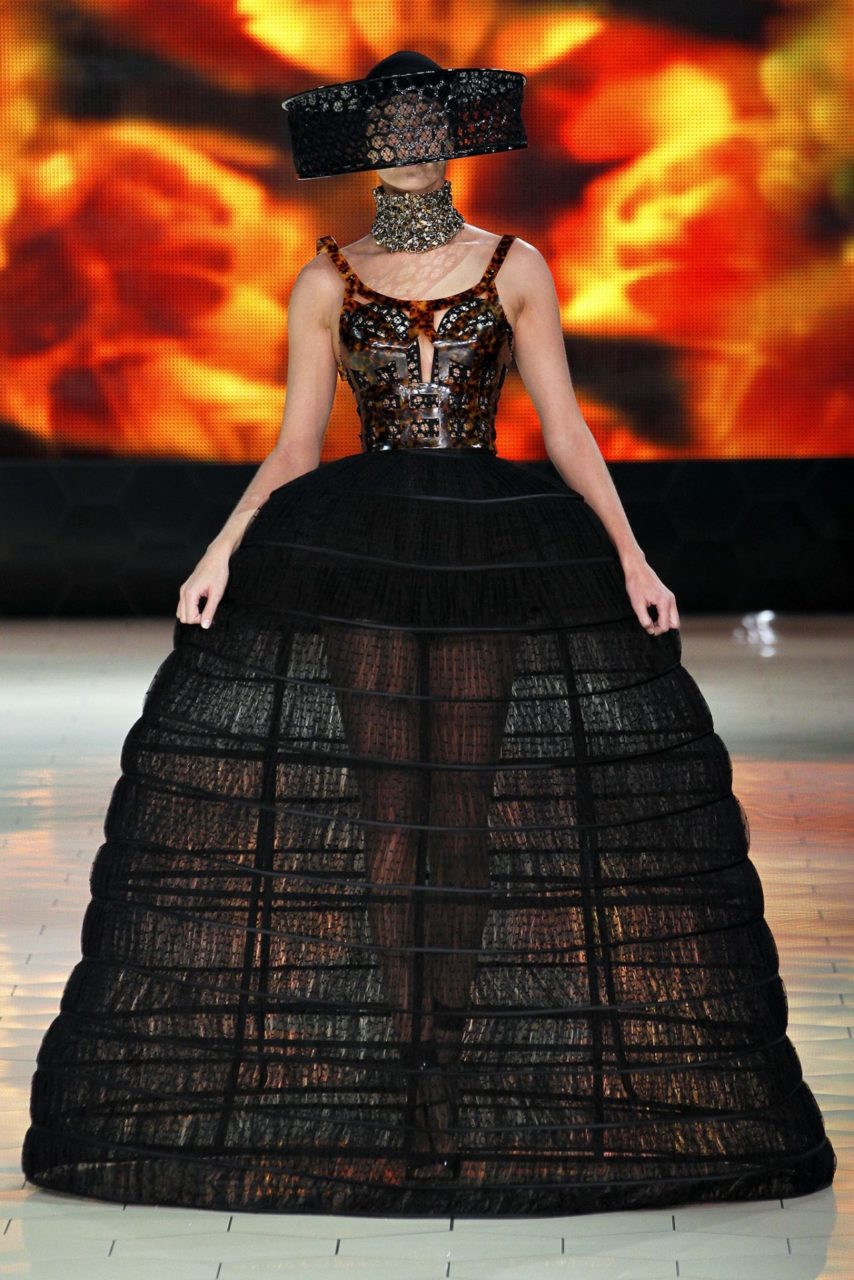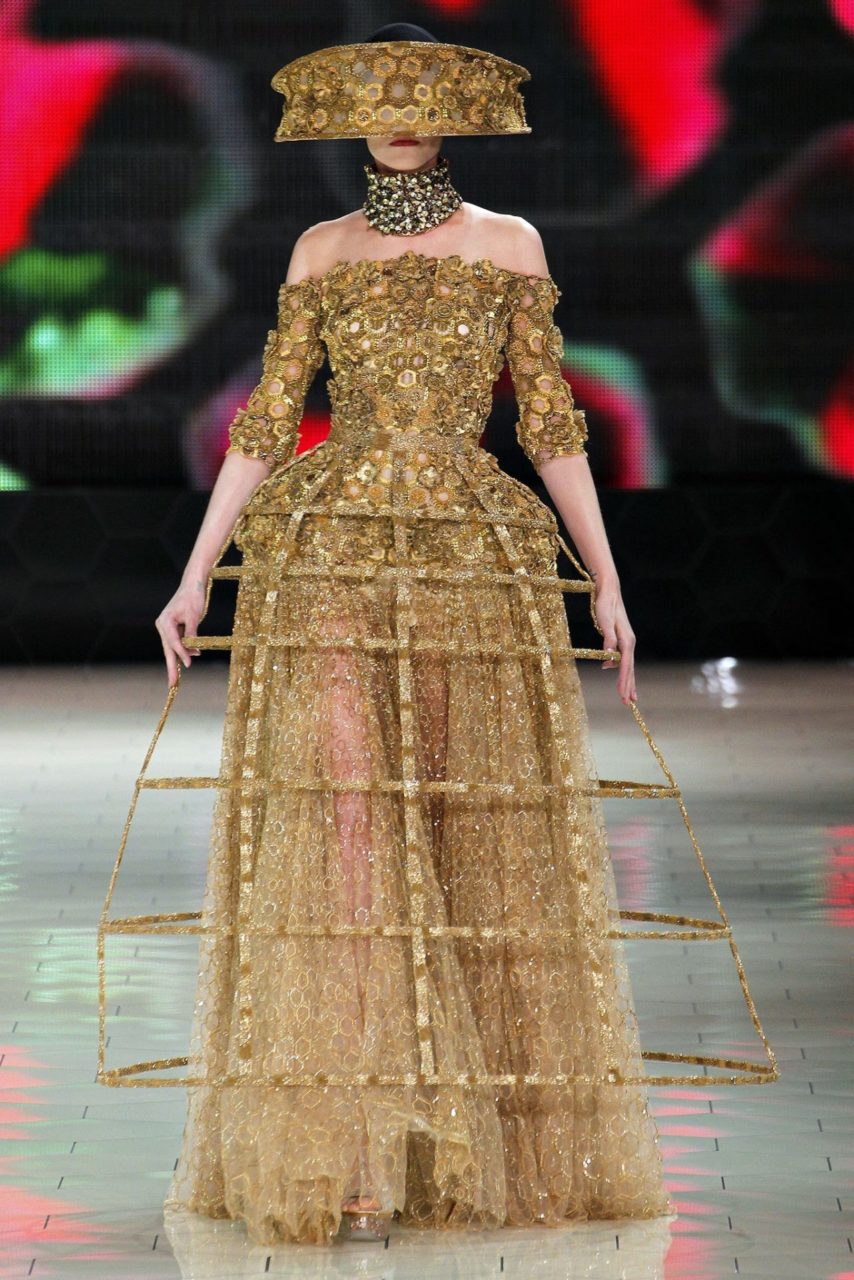An under-structure used in eighteenth-century fashion that created a shape wide at the sides and flat at the front and back.
The Details
Panniers are also sometimes spelled paniers (with one n); the word sometimes also appears in the singular rather than the plural. The Dictionary of Fashion History, for example, defines a ‘panier’ as:
“The French term for side hoops or false hips.The word was not used in England in the 18th century, hoop being preferred. In the late 19th and early 20th century it described a drapery style of the skirt or overskirt when bunched upon the hips, and could be spelt as ‘pannier’.”
J. Anderson Black in A History of Fashion (1980) describes the necessity of the pannier, writing:
“The new silhouette was a skirt with wide hips but flat at the front and back. This shape could not be achieved with the hoop skirt and a new undergarment was introduced, which consisted of two baskets of whalebone or cane slung at either hip. These were called paniers after the side-slung baskets carried by donkeys, a similarity not unnoticed by contemporary satirists.” (149)
Figure 1 is a pannier from 1750 and shows the pronounced shape these under-structures took. Figure 2 represents an extreme example of a court dress that uses a pannier for structure underneath.
Fig. 1 - Maker unknown (British). Panniers, ca. 1750. Linen, cane. New York: The Metropolitan Museum of Art, 1973.65.2. Purchase, Irene Lewisohn Bequest, 1973. Source: The Met
Fig. 2 - Designer unknown (British). Court dress, ca. 1750. Silk, metallic thread. New York: The Metropolitan Museum of Art, C.I.65.13.1a–c. Purchase, Irene Lewisohn Bequest, 1965. Source: The Met
Fig. 3 - Maker unknown (British). Woman's Hoop Petticoat (Panier), 1750-1780. Linen plain weave and cane; 79.375 x 137.16 x 46.99 cm (31 1/4 x 54 x 18 1/2 in). Los Angeles: Los Angeles County Museum of Art, M.2007.211.981. Purchased with funds provided by Suzanne A. Saperstein and Michael and Ellen Michelson, with additional funding from the Costume Council, the Edgerton Foundation, Gail and Gerald Oppenheimer, Maureen H. Shapiro, Grace Tsao, and Lenore and Richard Wayne. Source: LACMA
Fig. 4 - Designer unknown (French). Robe à la Française, 1770-75. Silk, bast fiber. New York: The Metropolitan Museum of Art, 2009.300.690a, b. Brooklyn Museum Costume Collection at The Metropolitan Museum of Art, Gift of the Brooklyn Museum, 2009; Gift of Orme and R. Thornton Wilson in memory of Caroline Schermerhorn Astor Wilson, 1949. Source: The Met
Blanche Payne in History of Costume, from the Ancient Egyptians to the Twentieth Century (1965) describes the inner workings of the pannier, which could be:
“provided with hinges which made it possible to collapse the lateral extensions when passing through doorways or entering a vehicle…. the spring of whale bone or caning was regulated by pairs of tapes on the inside of the garment which could be tied to whatever front-to-back depth the wearer desired.” (426)
Figure 3 shows a pannier from the period of 1750-1780. A 1770s robe à la française (Fig. 4) with a pannier underneath demonstrates how durable the pannier was as a trend, being worn not just under court mantuas, but also later 18th-century styles.
Its Afterlife
The Spring 2013 Alexander McQueen Ready-to-Wear collection, designed by Sarah Burton, featured several dresses that incorporated panniers (Figs. 5 & 6).
Fig. 5 - Sarah Burton (British, 1974-). Alexander McQueen Ready-to-Wear, Spring 2013. Monica Feudi / Feudiguaineri.com. Source: Vogue
Fig. 6 - Sarah Burton (British, 1974-). Alexander McQueen Ready-to-Wear, Spring 2013. Monica Feudi / Feudiguaineri.com. Source: Vogue
References:
- Black, J. Anderson, Madge Garland, and Frances Kennett. A History of Fashion. Rev. ed. New York: Quill, 1980. http://www.worldcat.org/oclc/24509708.
- Cumming, Valerie, C. W. Cunnington, and P. E. Cunnington. “Panier.” In The Dictionary of Fashion History, 148. Oxford: Berg Publishers, 2010. Accessed September 19, 2017. https://www.bloomsburyfashioncentral.com/products/berg-fashion-library/dictionary/the-dictionary-of-fashion-history/panier.
- “Pannier (Clothing).” Wikipedia, September 1, 2017. https://en.wikipedia.org/w/index.php?title=Pannier_(clothing)&oldid=798354935.
- Payne, Blanche, Geitel Winakor, and Jane Farrell-Beck. The History of Costume: From Ancient Mesopotamia Through the Twentieth Century. 2nd ed. New York: HarperCollins, 1992. http://www.worldcat.org/oclc/439229006.

